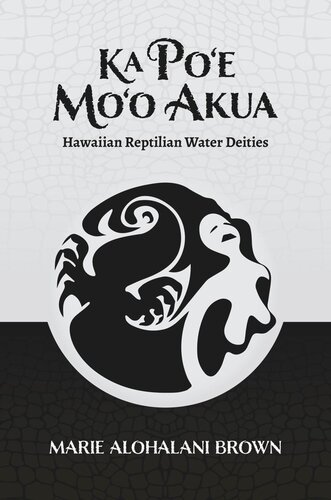

Most ebook files are in PDF format, so you can easily read them using various software such as Foxit Reader or directly on the Google Chrome browser.
Some ebook files are released by publishers in other formats such as .awz, .mobi, .epub, .fb2, etc. You may need to install specific software to read these formats on mobile/PC, such as Calibre.
Please read the tutorial at this link: https://ebookbell.com/faq
We offer FREE conversion to the popular formats you request; however, this may take some time. Therefore, right after payment, please email us, and we will try to provide the service as quickly as possible.
For some exceptional file formats or broken links (if any), please refrain from opening any disputes. Instead, email us first, and we will try to assist within a maximum of 6 hours.
EbookBell Team

4.4
22 reviewsTradition holds that when you come across a body of freshwater in a secluded area and everything is eerily still, the plants are yellowed, and the water covered with a greenish-yellow froth you have stumbled across the home of a mo‘o. Leave quickly lest the mo‘o make itself known to you! It might eat (‘ai) you or take you as a lover (ai); either way, you will be consumed completely.
Revered and reviled, reptiles have slithered, glided, crawled, and climbed their way through the human imagination and into prominent places in many cultures and belief systems around the world. Ka Po‘e Mo‘o Akua: Hawaiian Reptilian Water Deities explores the fearsome and fascinating creatures known as mo‘o that embody the life-giving and death-dealing properties of water. Mo‘o are not ocean-dwellers; instead, they live primarily in or near bodies of freshwater. They vary greatly in size, appearing as tall as a mountain or as tiny as a house gecko, and many possess alternate forms. Moʻo are predominantly female, and the female moʻo that masquerade as humans are often described as stunningly beautiful.
During an earlier period in Hawaiian history, mo‘o akua held distinctive roles and filled a variety of functions in overlappingfamilial, societal, economic, political sectors. Religion, people’s belief in mo‘o akua, was the foundation upon which these roles and functions were established. Marie Alohalani Brown’s extensive research in Hawaiian-language archives has recovered knowledge about more than threehundred moʻo. In addition to being a comprehensive treatise on moʻo akuathis work includes a detailed catalog of 288 individual mo‘o with source citations. It makes major contributions to the politics and poetics of reconstructing ʻike kupuna (ancestral knowledge), Hawaiian aesthetics, the nature of tradition, the study and appreciation of moʻolelo and kaʻao (hi/stories), genre analysis and metadiscursive practices, and methodologies for conducting research in Hawaiian-language newspapers. An extensive introduction also offers readers context for understanding how these uniquely Hawaiian deities relate to other reptilian entities in Polynesia and around the world. Accessibly written about a captivating subject, this extraordinary monograph is the result of over two decades of dedicated study.